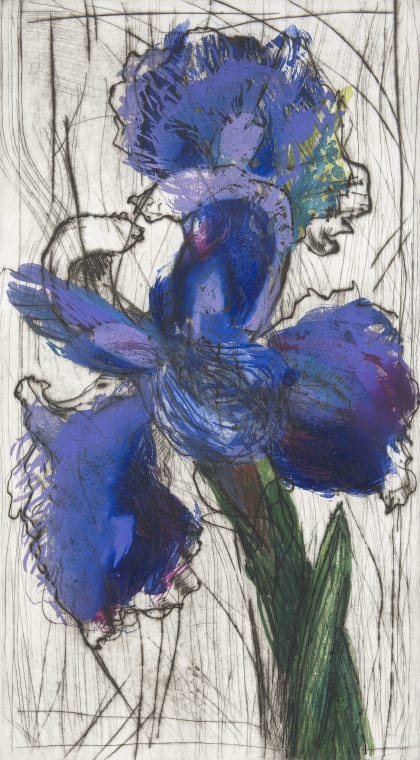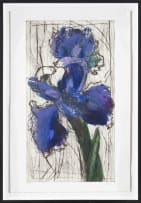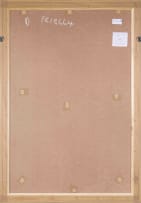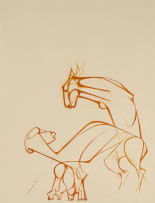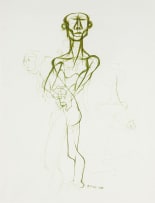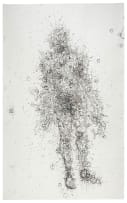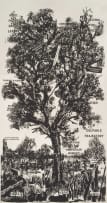Modern and Contemporary Art
Live Virtual Auction, 21 September 2022
Evening Sale
Incl. Buyer's Premium & VAT
About this Item
signed and inscribed 'Proof' in pencil in the margin
Notes
This highly sought-after proof print, published in 1994, extends on formal experiments introduced in William Kentridge's iconic mixed-media drawing Iris (1991), made with ground pigments bought in Italy. Strauss & Co sold the drawing in 2019 for R4.2 million. This later print edition, made with British printmaker Jack Shirreff, affirms Kentridge's strong relationship between drawing and printmaking. "I think printmaking, in general, made me aware of just how physical drawing could be," the artist said in 2009. "I've always enjoyed the physicality of drawing. My more mature drawing came out of my earlier activity in etching."1 Printmaking, far from being a secondary procedure for making images, is a "very central part" of Kentridge's process.2 His debut exhibition in 1979 was largely composed of prints. Throughout his prolific career since he has worked with highly respected printmakers, including Shirreff, described in a 2017 obituary as "one of the most influential atelier master printmakers of his time".3
The labour of producing this etching stemmed from three engagements with Shirreff at his workshop in Wiltshire in 1993. The process yielded a number of seminal prints now all considered highly collectible. They include four variants of an iris bloom: two drypoint prints with additional hand painting titled Iris and Black Iris; the copper-plate lift ground aquatint Dutch Iris 1, which featured multiple colour inking applied by hand using cloth (à la poupée) and was characterised as an indulgence; and this print, Dutch Iris, produced with drypoint on acrylic printed between the two lift-ground aquatints. "This formula was arrived at after much proofing, wet on wet, and many colour trials," reported Rosemary Simmons, artist and founding editor of Printmaking Today. "The result is a most dramatic image which has all the dynamism of drawing with all the painterly qualities of rich colour. These prints use the medium of intaglio not just as a means of replication but as a medium of such flexibility as to rival painting."4
Kentridge was initially resistant to the vivid outcome of the prints. "It took a long time for me to be able to accept the colour in those etchings. It seemed very much too bright and too brilliant for me to deal with. And I think I do have a problem working with colour and always need to find strategies and subterfuges to bring it into the work. The torn-out sheets of gouache was one way of working, flatly colouring sections of aquatint was another. All different ways to avoid the responsibility of having to put paint on the brush, and in a moment try to assess colour on a canvas in front of me."5
1.William Kentridge (2009) 'Double Lines', in William Kentridge: Five Themes. San Francisco, San Francisco Museum of Modern Art, page 231.
2. William Kentridge (2015), Interview with Cécile Godefroy and Vérane Tasseau for Cahiers d'Art Special Issue, Picasso: In the Studio. London, Thames & Hudson, WK studio archive.
3. Mel Gooding (2017) 'Jack Shirreff obituary', Guardian, 2 June: https://www.theguardian.com/artanddesign/2017/jun/02/jack-shirreff-obituary
4. Rosemary Simmons (1993) 'Romancing the Plate', Printmaking Today, Vol. 2 (4), page 7.
5. William Kentridge (1997), excerpted from interactive CD-Rom published by David Krut.
